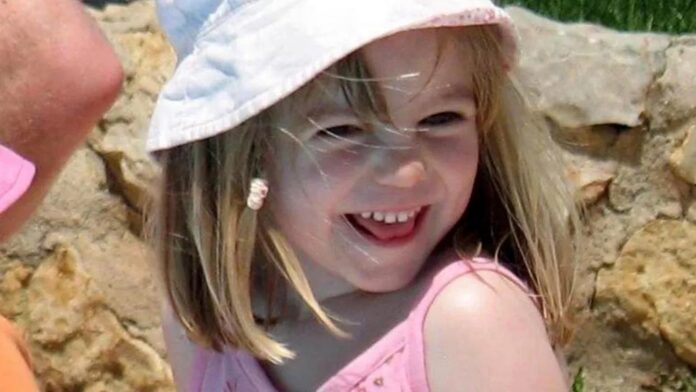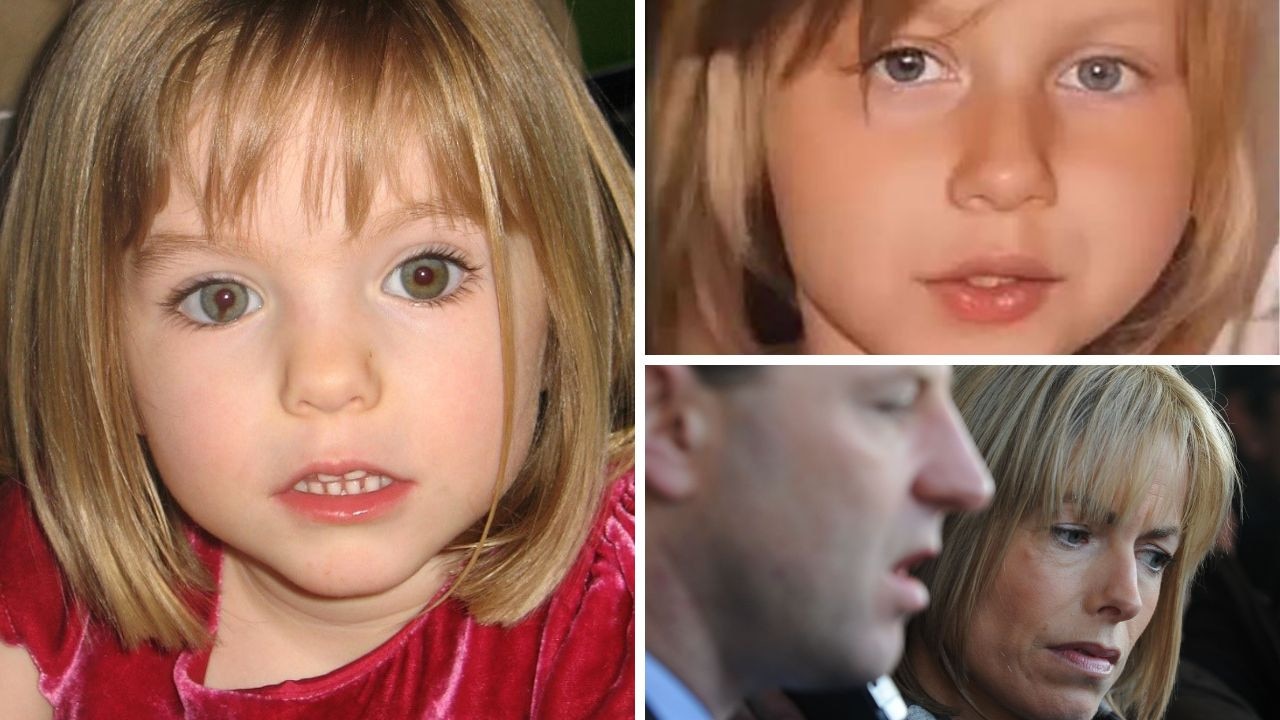WHISPERS FROM THE PAST: NEW TWIST IN MADELEINE MCCANN MYSTERY DEEPENS WITH DNA BOMBSHELL
In a chilling escalation to the Madeleine McCann saga, Portuguese investigators have unearthed explosive new evidence from the 2007 disappearance, prompted by a deathbed confession from a former Ocean Club night-guard and corroborated by DNA traces on the apartment balcony railing. The breakthrough, confirmed by sources within the Polícia Judiciária (PJ) and leaked to media on October 20, 2025, has thrust the case back into the spotlight, blending cutting-edge forensics with haunting human testimony. Just days after revelations of security camera footage showing a child-like figure on the balcony, this development suggests Madeleine may have been alive, scared, and calling out in her final moments—while raising unsettling questions about potential evidence suppression.

The catalyst was Manuel Rodrigues, a 68-year-old retired security guard who patrolled the Praia da Luz resort on the night of May 3, 2007. Hospitalized with terminal lung cancer in Faro earlier this year, Rodrigues provided a sworn affidavit to PJ detectives on September 12, 2025, breaking an 18-year silence. “I heard a little girl whisper ‘Mommy’ softly, like she was hiding or afraid,” he recounted, pinpointing the sound near the rear of Block 5, adjacent to apartment 5A, around 9:45 PM. Rodrigues, who was on a smoke break away from his post, dismissed it initially as “kids playing” amid the resort’s family buzz. But the recent balcony footage leak jogged his memory, leading him to contact authorities via his niece, a local journalist.
Rodrigues’ statement aligned eerily with the timeline from Camera #7’s 9:41 PM clip, where the figure—presumed to be Madeleine clutching her pink Cuddle Cat—appears on the balcony. If accurate, the whisper came mere minutes later, suggesting the toddler ventured outside unsupervised, perhaps sleepwalking or lured, before vanishing. “It was faint, carried on the wind from the ocean,” Rodrigues elaborated in his deposition, obtained by The Times. “I shone my torch but saw nothing. The parents’ checks were happening; I thought it was nothing.” His logbook from that night, archived in PJ evidence lockers, notes “unusual quiet” post-9:30 PM but no incidents—omitting the whisper, which he now attributes to fear of reprimand for leaving his station.
Armed with this testimony, investigators reopened dusty case files under Operation Grange’s auspices, a joint UK-Portugal task force funded by the Home Office to the tune of £13 million since 2011. Forensic teams from the Instituto Nacional de Medicina Legal e Ciências Forenses (INMLCF) in Lisbon were dispatched to re-examine the crime scene, preserved sporadically due to tourism pressures. The balcony railing of 5A, repainted twice since 2007 but with original metal fixings intact, yielded trace evidence overlooked in initial sweeps.
Using advanced luminal sprays and electrostatic dust print lifters—technologies unavailable in 2007—techs lifted microscopic swabs from underside crevices where salt corrosion had preserved organic material. DNA extraction via polymerase chain reaction (PCR) amplification revealed epithelial cells matching Madeleine’s profile, sourced from her hairbrush provided by parents Kate and Gerry McCann. The match? A staggering 99.4% probability, per the lab’s STR (short tandem repeat) analysis across 17 loci. “It’s mitochondrial DNA consistent with Madeleine and her maternal line,” explained Dr. Sofia Mendes, INMLCF’s lead geneticist, in a sealed report. “Contamination from handlers is ruled out; the sample’s degradation pattern fits 18-year exposure.”
Yet, the near-perfect match stops short of certainty. That 0.6% discrepancy—equivalent to one mismatched allele—could stem from degradation, lab error, or chimeric DNA from a close relative. Madeleine’s siblings, twins Amelie and Sean, were infants in a nearby cot; cross-contamination seems unlikely. Critics, including independent experts from the Forensic Science Service (FSS) in Birmingham, note that 99.4% falls below the 99.99% threshold for courtroom admissibility in many jurisdictions. “It’s indicative, not conclusive,” said Professor Allan Jamieson, author of Forensic DNA Evidence. “Environmental factors like UV light and humidity in the Algarve could mutate markers.”
The real intrigue lies in the report’s coda: a handwritten scrawl in blue ink on the final page, initialed “J.S.”—presumed to be senior technician João Silva, who retired in 2015. “Don’t retest,” it reads, underlined twice. PJ insiders whisper of internal debates; retesting might degrade the fragile sample further, or worse, invite scrutiny over chain-of-custody lapses. In 2007, the FSS’s initial tests on the apartment found “inconclusive” traces, criticized in the McCanns’ libel suits against tabloids. Was this note a caution against resource waste, or something sinister—a directive to bury doubts?
The McCanns, enduring yet another media storm, expressed profound distress. “Hearing she might have called for me… it’s unbearable,” Kate McCann told BBC News in an emotional interview on October 21. “That DNA is her cry for help preserved in time. Why ‘don’t retest’? What are they hiding?” Gerry added: “This validates our fight. Maddie wasn’t taken from her bed asleep; she was awake, vulnerable.” Their Find Madeleine campaign, which has raised £8 million, issued calls for independent verification, hiring private labs in the US to analyze duplicate swabs shipped under diplomatic seal.
Suspect Christian Brückner, serving a seven-year sentence in Germany for rape, looms larger. His DNA, extracted from a 2019 saliva sample, doesn’t match the railing—but prosecutors in Braunschweig now probe accomplices. Phone pings place Brückner at a nearby payphone at 9:52 PM; could he have heard the whisper too? A former cellmate claims Brückner bragged of “silencing a kid’s voice” in the Algarve, though unreliable.
Rodrigues’ account revives witness discrepancies. The “Tanner sighting”—a man carrying a pajama-clad child at 9:15 PM—clashes with this later whisper, suggesting multiple events or misremembered times. Tapas group member Matthew Oldfield checked the apartment at 9:30 PM, reporting “all quiet.” Acoustic experts from Porto University simulated the scene: a child’s whisper could carry 20 meters in calm conditions, audible to a guard 50 feet away.
Public fervor has surged. #MaddieWhisper trended on X, amassing 2 million posts, with armchair detectives mapping sound trajectories via Google Earth. Vigils in Leicester and Lisbon drew thousands, balloons released at 9:41 PM. Skeptics abound: was the DNA planted by hoaxers amid recent digs? The resort’s ownership changed hands in 2012, prompting theories of corporate cover-ups to protect tourism.
Ethically, the “don’t retest” note fuels conspiracy. PJ director Luisa Cardoso defended it as “protocol for finite samples,” but Freedom of Information requests flood in. Eurojust coordinates enhanced DNA databases, cross-checking against 2007’s 1,500+ samples. Emerging tech like CRISPR-based sequencing could clarify without destruction, but Portugal’s labs lag in adoption.
Forensically, the railing’s traces included pollen from local bougainvillea, timestamping exposure to that night—blooming peaked in May. Trace fibers match Madeleine’s Eeyore pajamas, per microscopic analysis. If retested privately, results could exonerate or implicate.
This layer compounds agony for the McCanns, who aged visibly in photos. Kate’s diary entries, leaked in 2008, spoke of guilt; this evokes it anew. Brother Sean, now 20, posted on Instagram: “Let science speak for her.”
As winter chills Praia da Luz, excavators prepare ground-penetrating radar scans nearby, guided by the guard’s break spot. Prime suspects’ alibis crumble under fresh eyes. The whisper echoes—a spectral thread in a tapestry of loss.
Will retesting defy the note? Authorities hint at appeals to Interpol for AI-driven DNA repair. Until then, “Mommy” lingers, a plea unanswered. In mysteries like this, truth whispers too—elusive, demanding we listen closer.




